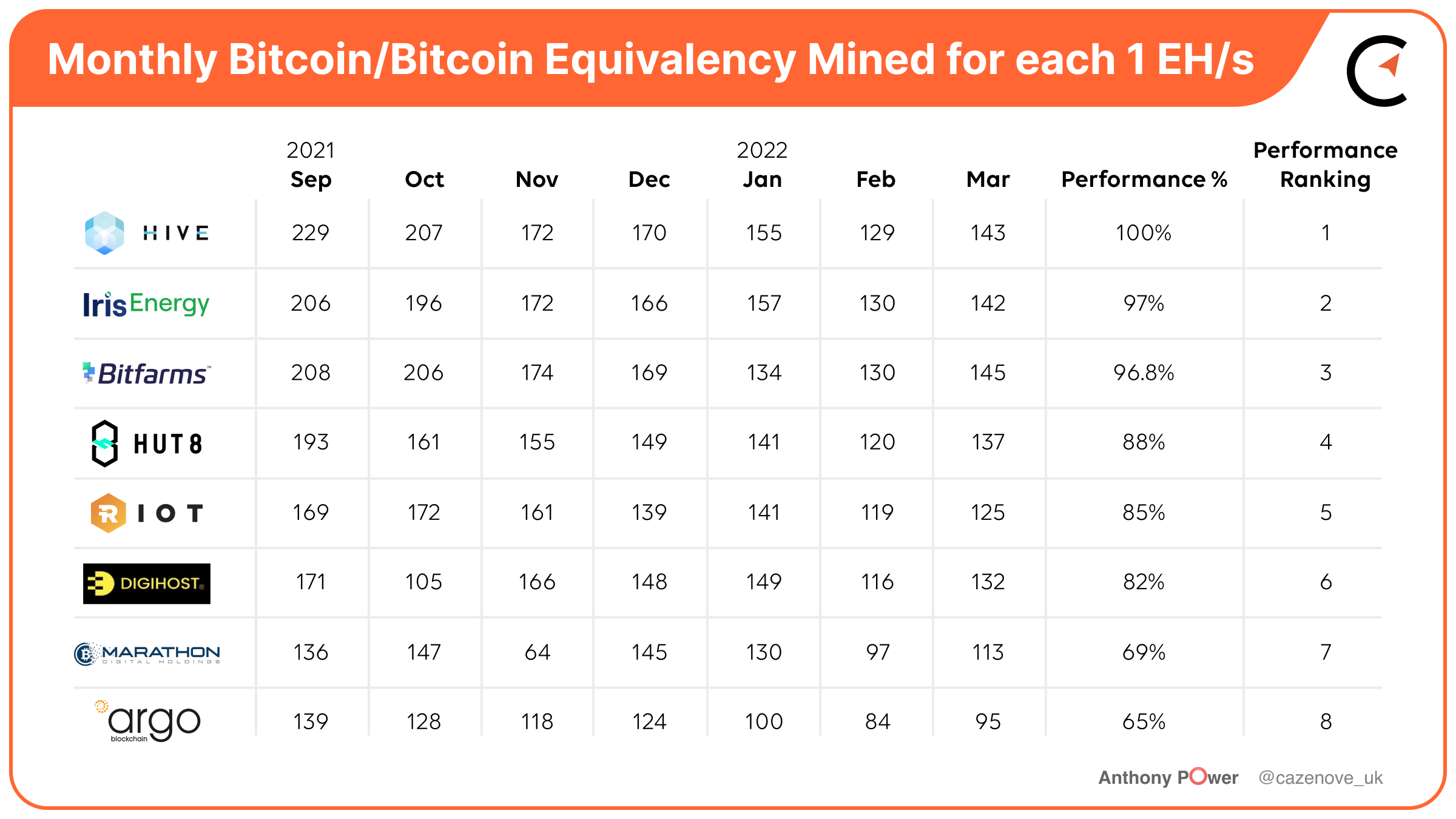All Formula 1 cars are equipped with powerful engines which can produce some 1,000 horsepower of energy. There are, however, key differences within each engine that need to be taken into account, such as aerodynamic designs, fuel, tires and the ability of each driver, which determine the actual overall performance of each car.
Bitcoin mining is no different. Hashrate is a measure of the total computational power being used by a proof-of-work cryptocurrency network to process transactions in a blockchain. Each miner's strategy feeds into that performance.
There are a number of additional reasons that would impact the efficiency, and effectiveness of miners. The site location and infrastructure are both important. Environmental issues such as dust, sand, humidity and temperature all play a factor in the efficiency of mining and longevity of the equipment. Bitcoin mining is very resource-intensive, and can put a large strain on mining hardware. In fact, maintenance and repairs to miners, along with software upgrades will all cause significant downtime in mining hashrate.
As the global Bitcoin hashrate (currently above 200 EH/s) is on track to exceed 300 EH/s by the end of 2022, the mining difficulty – a measure of how hard a miner has to work to verify transactions on the block – also increases, and changes usually every two weeks, thereby making it more challenging to mine a block worth about 6.25 BTC.
Public miner performance
Public miners make a variety of disclosures concerning Bitcoin production, as pioneered by Argo Blockchain CEO Peter Wall in January 2020. Monthly mining updates include deployed hashrate, Bitcoin produced and total Bitcoin held, or “Hodl.”
From this information it can be determined how much hashrate each miner is using to produce 1 Bitcoin. The table below highlights the production of Bitcoin/Bitcoin Equivalency* for each 1 EH/s of mining power. The table also compares the miners performance, with Hive Blockchain, the consistent performer over the period highlighted. Iris Energy and Bitfarms closely follow with similar performance. Marathon Digital and Argo Blockchain have both issued updates in relation to their mining issues, being infrastructure and the performance of S17 and T17 miners, respectively.

What the table also highlights is that Hive Blockchain has effectively produced approx 50% more Bitcoin, per EH/s of hashrate than both Marathon Digital and Argo Blockchain, over the period.
As stated above, numerous external factors can lead to lower performance percentages than anticipated. For example, curtailment of power has occurred in North America in recent months, caused by an increase in domestic demand for said power due to the colder weather. Both Bitfarms and Hive Blockchain reported in their monthly updates periods where significant curtailment occurred.
Luck also plays a small part in Bitcoin mining. There is an expectation that if a miner has 10% of the hash rate, then they should achieve 10% of the blocks mined. Luck is therefore a static value that updates occasionally, not a dynamic one updating constantly.
Looking forward
Technological advancements may be the key to increasing future performance. Both Riot and Argo are deploying large immersion facilities in Texas, which should increase hashrate output while decreasing downtime common to air cooled units.
DMG Blockchain CEO Sheldon Bennett recently commissioned a study on the benefits of immersion cooling carried out in early 2021. The results were very positive:
● Hashing power could be increased by up to 30%
● Operations can consume up to 18% less electricity
● Potential ROI can be increased by 25%
Of course, immersion has its potential downsides, especially its high capital costs. Still, it will be interesting to see the impact and compare the results of the study with both Riot Blockchain and Argo Blockchain, once their new processes are fully bedded in.
*Bitcoin Equivalency - HUT 8 also mines Ethereum, which is converted daily into Bitcoin. They use an equivalency factor for the hashrate.
Correction (April 26, 2022): As found in paragraph seven, an editor changed the actual value of 50% to an incorrect value of 30-35%. The value has been changed to reflect the correct percentage.

